Cedar Waxwings are a favorite of many birders and backyard naturalists. With their fuzzy-looking crests and sharp color accents, they’re dapper looking birds. A large flock of them picking through berries is always entertaining to watch. I count myself a member of the Waxwing Fan Club.
But what’s in a name? Why is it called a waxwing?
That’s pretty simple: Cedar Waxwings really have wax wings. The bright red, visible on the wing feathers of some waxwings, is actually waxy red secretions.
What’s the purpose of the wax? That question seems more difficult to answer. Many ornithological sites state that the purpose remains unclear.
Dave Mehlman, director of The Nature Conservancy’s Migratory Bird Program, often fields questions about various bird species. The Migratory Bird Program works to identify networks of habitat needed by bird species throughout North America, Latin America and the Caribbean. Then, they develop plans and implement strategies to help conserve them at the local level.
Recently, Mehlman was asked about the purpose of those wax wings. He shared what he found with me:
The red wax tips are appendages on the bird’s secondary feathers. They’re colored by astaxanthin, a carotenoid pigment.
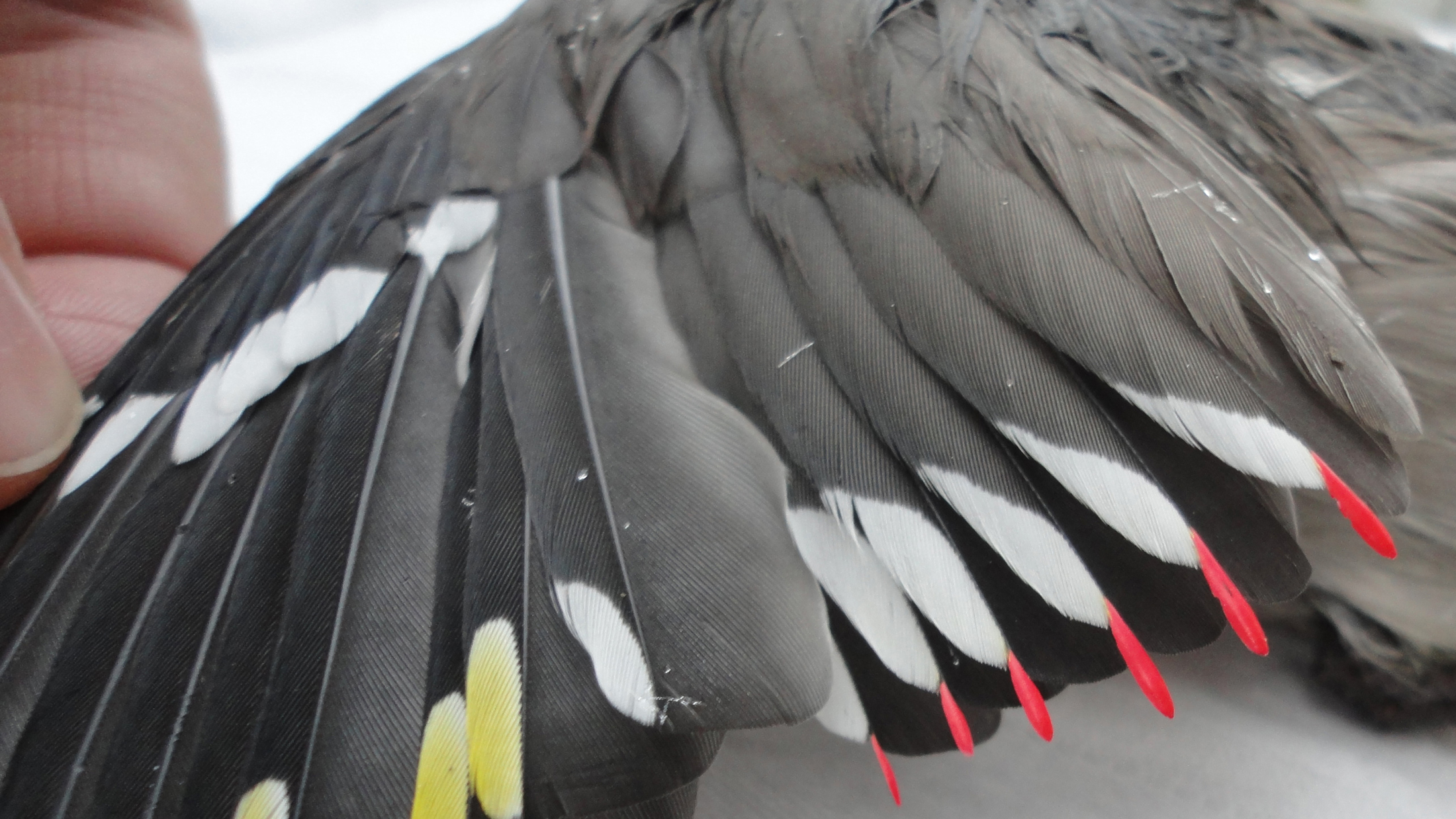
While it was originally thought that the red tips functioned to protect the feathers from wear and tear, there is little to no evidence for this hypothesis.
Rather, red secondary tips appear to be status signals that function in mate selection. Rare individuals have been noted with yellow waxy tips on secondary feathers.
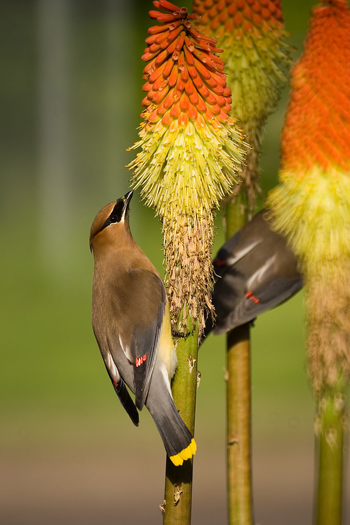
Interestingly, the red appendages of Cedar Waxwings increase in number and size with a bird’s age: individuals with zero to five waxy tips are presumable immature birds, while those with greater than nine are thought to be older.
Individuals within these two categories tend to associate as mates. Pairs of older birds (those with greater than nine waxy tips) nest earlier and raise more young than do immature birds, suggesting that this plumage characteristic is an important signal in mate choice and social organization.
Mehlman says this all suggests that waxwings evolved the red wax secretions as plumage enhancements to signal their age, maturity and social status among waxwings. This is a useful signal in a species that often is found in large flocks.
There is another interesting color phenomenon among Cedar Waxwings. These birds also have a striking yellow tail tip, but in some parts of their range some birds began appearing with orange tail tips in the 1960s.
According to the Cornell Lab of Ornithology:
The orange color is the result of a red pigment picked up from the berries of an introduced species of honeysuckle. If a waxwing eats enough of the berries while it is growing a tail feather, the tip of the feather will be orange.
And about those berries: Cedar Waxwings specialize in eating fruit, an interesting adaptation among North American birds. While we think of many birds as dining on berries, in reality berries are only ever a portion of their diets. Cedar Waxwings can exist solely on berries for months.
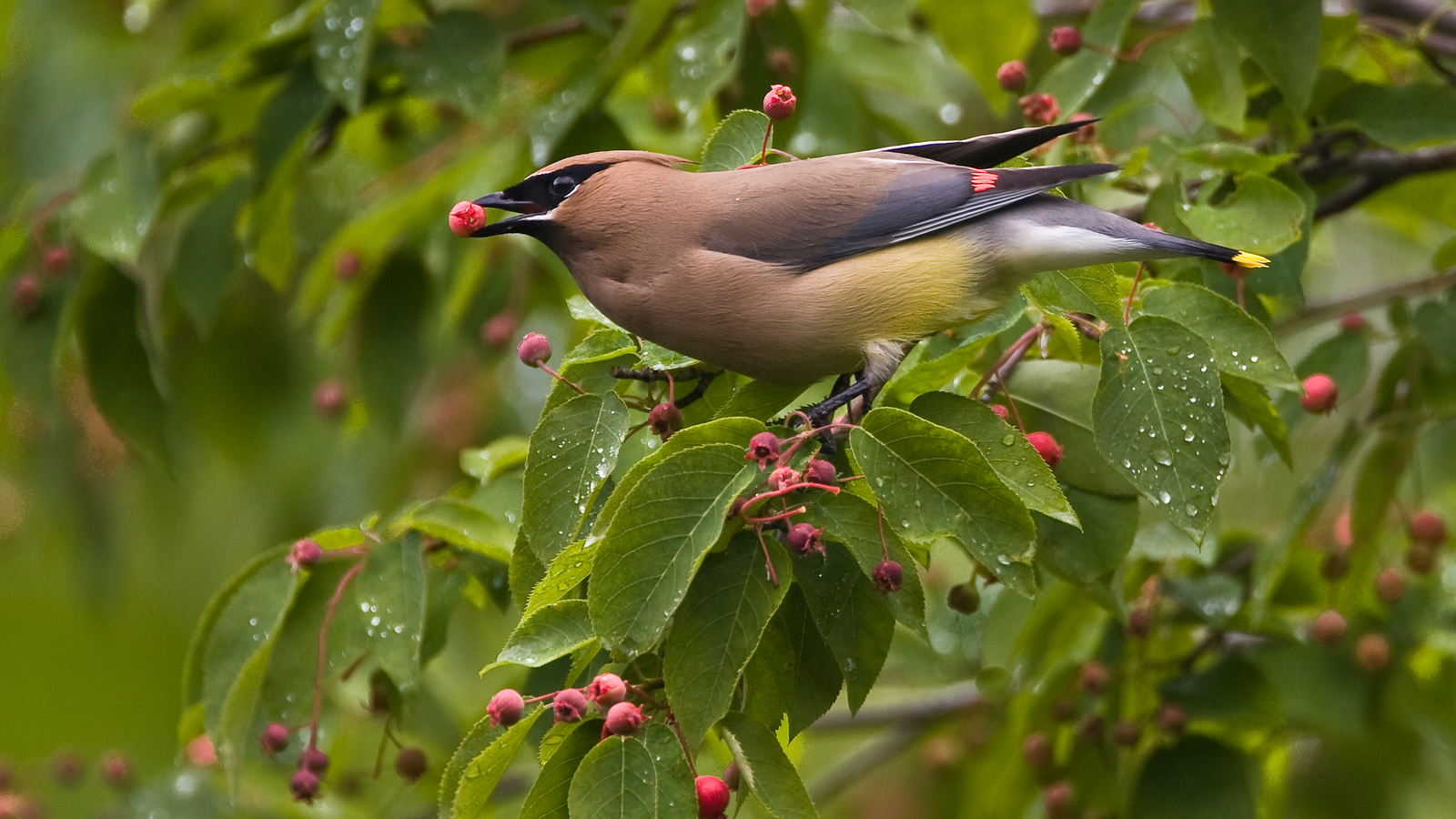
In fact, when that well-known nest parasite the Brown-headed Cowbird lays its egg in a Cedar Waxwing nest, the young cowbird has difficulty surviving. The high fruit diet is not conducive to a young cowbird’s growth and prosperity.
Sometimes, Cedar Waxwings eat berries that have fermented on the vine, leading to inebriated behavior from the birds.
Come summer, waxwings are often seen hunting insects. In fact, when I’m fly fishing a heavy mayfly hatch, I’ll often see them snatching the small insects as they hover over the water.
Even our common backyard birds are full of surprises. Enjoy their antics, and remember that your observations can often contribute to bird research and conservation.
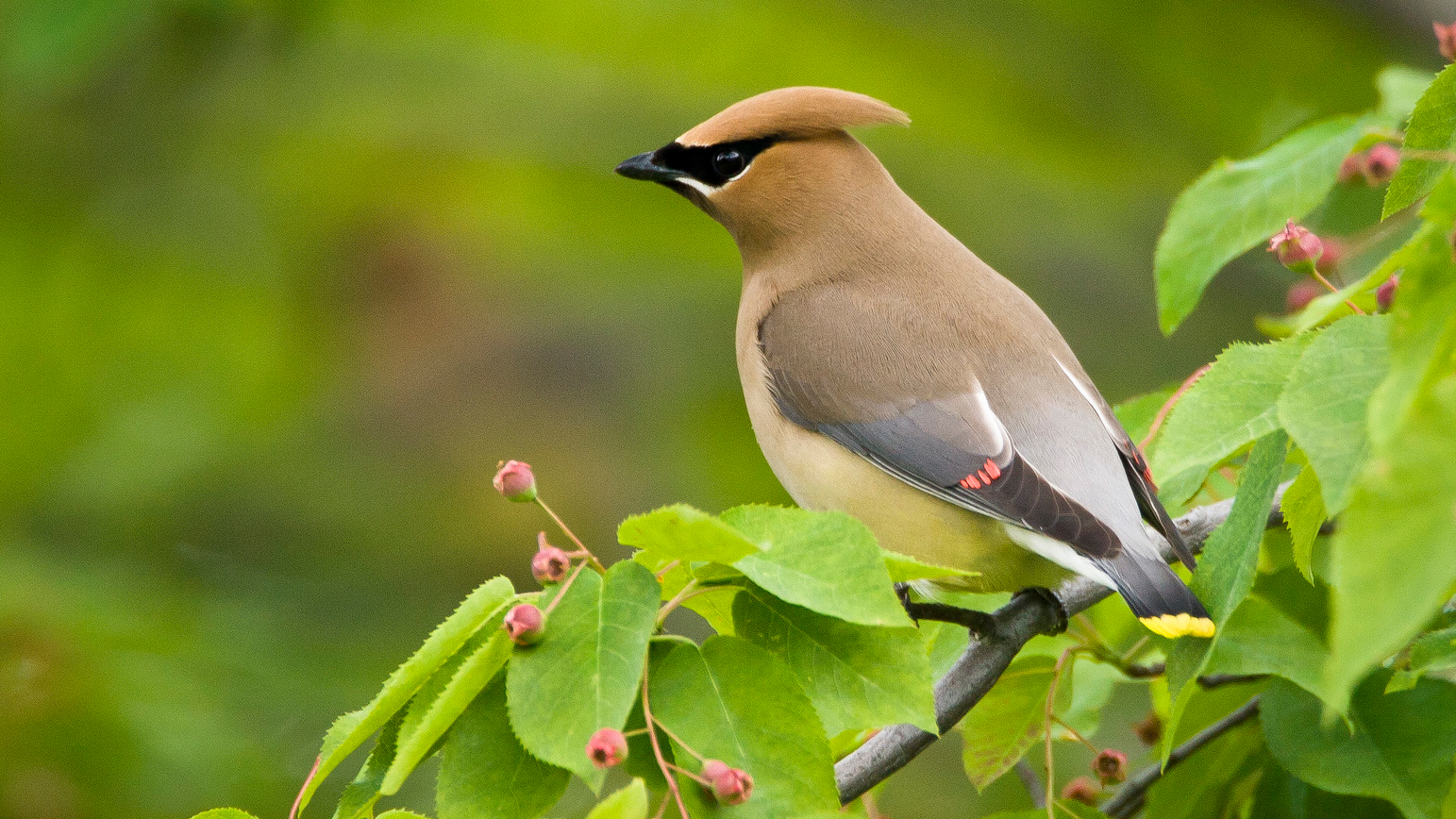
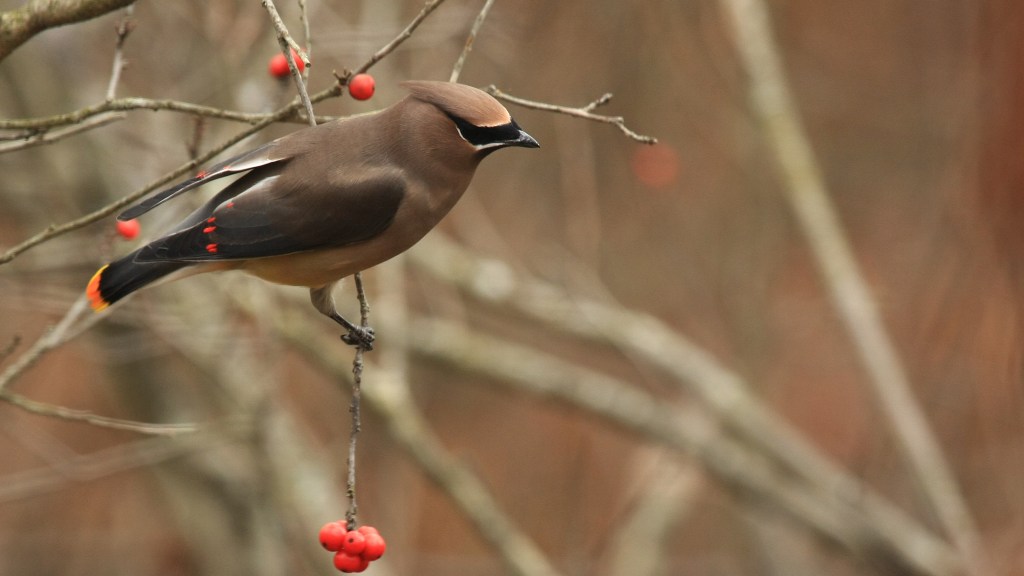



Mine visit our juniper tree for the berries. It makes the tree look alive with so many birds flitting up through the branches.
I once I saw a large flight of cedar waxwings settle in two blooming apple trees. The feasted on the blossoms with great enthusiasm. Perfect food for such abbeautiful bird.
Fascinating! We had a Cedar Waxwing pair nest in our Maple tree very close to our house a few years ago and they successfully raised 3 chick’s that Summer! They incorporated bright wool into their nest that I had put out for the birds to use. They been here also early Summer to eat the Maple tree blossoms!
The Bohemian waxwings mostly, show up here in January-February to eat the seeds in Mountain Ash berries when they are available.
Really fascinating information on one of my favorite birds to learn more about! Thank you, Matt!!!
Do the berries of the Nandina domestica really kill cedar wax wings?
Thank you for the question! Yes, they can, though I do not know of information on how commonly they do. Here is the published article on a case of Nandina domestica poisoning in cedar waxwings: https://www.ncbi.nlm.nih.gov/pmc/articles/PMC3005831/
Our mountain ash trees are a favorite winter food of the beautiful waxwings. Back yard habitat works for many wildlife species.
I understand that when a flock of Cedar Waxwing eat a lot of Nandina berries, that grow in bunches, that there is a toxin in the berries when eaten one at a time, will not harm the birds, but because the C.W. eat a lot at once, that it kills them. They come to my Hawthorne trees and take all the small red berries (which are really tiny apples] at once. So much fun to watch them!
Thank you for the warning Dollie!
Wow-very interesting. They are so regal. Flocks visit the vineyards in Oregon during harvest-needless to say many farmers aren’t thrilled with their arrival. 🙂
To Matt Miller:
On February 27 and 28 in Cleveland, Tennessee, flocks of Cedar Waxwings completely ‘cleaned out’ all the red berries on our cluster of three holly bushes in our front yard. The first day I stood near the bushes and took photos with my Nikon COOLPIX L840 camera with a 38x optical zoom, 16 mp. The flurry of activity made it difficult to focus on any one bird, but managed to get three I consider worth keeping. The second day it rained. The birds came but I didn’t. One photo is of a yearling with no red wing tips. The other two have the red tips, which I read come at age two and older. I was interested in this very informative article about the number of tips and their significance. I would like to send you my three photos, if you are interested. Thank you. Helen Burton / helenburtongraphics@gmail.com
Fascinating. This theory would imply that the birds can count (the number of waxy tips) in order to select an appropriate mate, or otherwise visually perceive the presence of more red tips. That’s a very detailed level of visual sensitivity. What kind of evidence do we have for their perception process? Are there other species that discern plumage differences with that degree of refinement?
Do waxwing individuals mate for multiple seasons? If so, perhaps a pair’s red tips increase each year together.
I’ve always thought cedar waxwings surpassingly beautiful birds. It is magical when a flock passes through.
Absolutely fascinating.
I am a member of the Waxwing fan club too! Here in the north valley of N. Calif. they come migrate in large flocks from I have no idea where. My yard is usually full of them feeding on privet berries.
There are loads of pyracantha and toyon berries in my valley but it’s woefully barren of waxwings….I sure wish they would visit!
These are stunning birds. I think the overall coloration is wonderful. In a class of flash with the wood duck.
How amazing and very informative I loved reading about this amazing little bird.